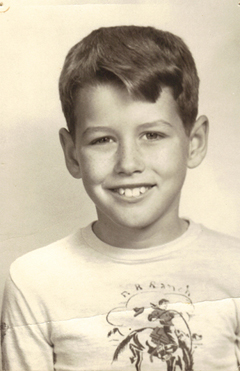Jenny Diski's new book, What I Don't Know About Animals, will be out this fall. She is a regular contributor to the London Review of Books. A previous article at OEN by Diski can be found by clicking here; and two previous OEN Quick Links by her can be found by clicking here and here. Note that the Quick Link URLs link directly to the LRB.
The book which Ms. Diski reviewed in the November 18, 2004, issue of the London Review of Books was: The Man who Shocked the World: The Life and Legacy of Stanley Milgram by Thomas Blass, Basic Books (2004).
The text of the review follows:
"Stanley Milgram's series of experiments to find out how far individuals would go to obey authority are legendary. Conducted in New Haven, Connecticut in 1961, they have been cited in manuals written by dog trainers (Bones Would Rain from the Sky by Suzanne Clothier) and self-help pundits (The Necessary Disobedience by Maria Modig, dedicated to Milgram), as well as being the source for a Peter Gabriel song entitled 'We Do What We're Told (Milgram's 37)'. A French punk rock group called Milgram put out a CD called Vierhundertf????nfzig Volt (450 Volts). A British band called Midget issued The Milgram Experiment. Plays have been written (Dannie Abse's The Dogs of Pavlov was the first, in 1973); a stand-up comedian, Robbie Chafitz, called his 1999 weekly off-off-Broadway performances The Stanley Milgram Experiment; a French movie with Yves Montand, I comme Icare, made in 1979, came out of it, with Milgram himself pictured on the set; and a textbook used in courses on business ethics cites the obedience experiments to warn students about the evil things their bosses might ask of them and how to resist. I can't say about the dog-training or self-help books, but this last educational effort doesn't seem to have worked.
Milgram advertised for his subjects in the New Haven Register (Yale students were considered too aggressive to use), and paid them $4 for their hour's attendance plus 50 cents' travel allowance. Only males (except in one variation) were used, and they spanned occupational levels from unskilled to professional. Each subject sat alone at a fake 'shock machine' built by Milgram, which had 30 switches, labeled in 15-volt increments from 15 volts to 450 volts and grouped in fours, with descriptions above each group: slight shock, moderate shock, strong shock, very strong shock, intense shock, extreme intensity shock, danger severe shock. The final two switches were labeled just xxx. Each subject was told they were participating in a 'Memory Project', the aim of which was to study how people learn. They were 'teachers'. In an adjoining room a 'learner' sat wired up to the shock machine. He had to repeat the second of pairs of words he was supposed to have learned. The 'teacher' cued with the first word. An incorrect answer was punished with an electric shock. With each wrong answer the 'teacher' was instructed to move up a switch. The learner, who was, of course, a member of Milgram's team, could be heard but not seen, and as the switches were flipped, he began complaining until, at the higher voltages, he screamed in agony and begged the subject not to hurt him, demanding his right to be let out. In addition to hearing the pain they were inflicting, the subjects were told that the learner had a heart condition. Any reluctance was met by the experimenter saying in authoritative tones: 'Please go on.' After three prompts, the subject was told: 'You have no choice, you must go on.' If the subject refused after the fourth prompt, the experiment was stopped. In some of the variations, after the 300-volt shock the learner pounded on the wall, and then after 315 volts remained totally silent.
Overall, 65 per cent of subjects were prepared to administer the 450-volt shock, not once, but several times. They sweated, they groaned, they queried, but when told they had to do it 'for the experiment', they flipped the switch. Milgram wrote:
The results are terrifying and depressing. They suggest that human nature or more specifically, the kind of character produced in American society cannot be counted on to insulate its citizens from brutality and inhumane treatment at the direction of malevolent authority. In a naive moment some time ago, I once wondered whether in all of the United States a vicious government could find enough moral imbeciles to meet the personnel requirements of a national system of death camps, of the sort that were maintained in Germany. I am now beginning to think that the full complement could be recruited in New Haven. A substantial proportion of people do what they are told to do, irrespective of the content of the act, and without pangs of conscience, so long as they perceive that the command comes from a legitimate authority.
(Note: You can view every article as one long page if you sign up as an Advocate Member, or higher).






